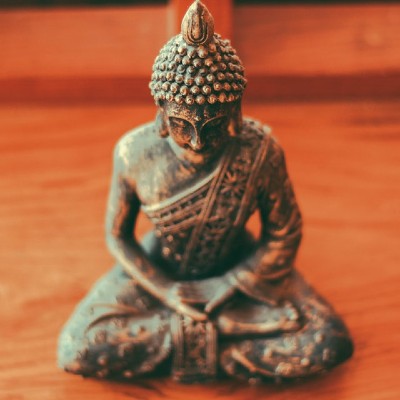When times are uncertain, challenging, turbulent, or painful, I find that one important refuge for me is bringing awareness into my body. The body is always present, not caught in past and future like the mind can be. The body has a sense of solidity and connection to the ground, the earth, that can bring a greater sense of calmness and clarity. The body holds the sensations of emotions, which can be tended to with compassion without getting caught in story.
The Buddha referred to mindfulness immersed in the body as a tremendous boon. Some of the benefits the Buddha outlined include: 1) Conquering fear and dread; 2) Conquering displeasure; 3) A profound discernment of the nature of others and an attunement with them; 4) The capacity to endure all sorts of bodily discomforts, including pain and the stinging of mosquitos; 5) The capacity to not be affected by abusive, hurtful language; 6) The capacity to enter a deeply concentrated state at any time. He also went on to describe many higher order benefits such as supernormal powers and the ability to recall past lives.
While mindfulness immersed in the body can be practiced in many ways, there is one practice that I find to be helpful almost immediately, and without any training needed: grounding.
Grounding
I invite you to try a short experiment: Deliberately hold your attention outside your body (i.e., in the environment) for 30 seconds. Then close your eyes and hold your attention in your head for 30 seconds. Then move your attention to your chest for 30 seconds. Finally, move your attention to either the lower belly or the point of contact with your seat. As you do this, notice the effect on your sense of stability, the activation of your nervous system, and the clarity of your mind.
Many people notice from this experiment that as the center of gravity of attention is lowered, there tends to be a greater sense of stability, of a calming nervous system, and a clarity of mind. There is a toy called a Weeble – a round-bottom plastic toy in different forms, for example, a snowman. There is an advertising jingle that says, “Weebles wobble but they don’t fall down.” You push on the head of the Weeble, it rotates toward the ground and then bounces right back up. The key to the stability of the Weeble is that is has a low center of gravity – all the weight is in the bottom.
In a similar way, when we can lower the center of gravity of our attention – to the lower belly or to contact with our seat or to our legs and feet – we find a sense of stability waiting for us. We have a natural tendency to keep attention in the mind or in the environment. We think that our minds will solve all our problems. But when the mind is overwhelmed, it becomes inefficient. We tend to stay in a loop: we feel fear, so we ask the mind to figure out how to resolve our issues. In fear, however, the mind is essentially offline, so it can’t resolve our issues. Then we get more fearful and ask the mind even more firmly to resolve the issue. We go over the story repeatedly, but to no avail. We stay stuck in a loop of reactivity.
It may seem counterintuitive, but when we stop asking the mind to solve our problems and bring attention low into the body, the mind actually becomes more effective. There is a security and wisdom in the body. There is a sense of being present, rather than caught in past or future. As we lower attention into the body, the nervous system tends to settle – like snow in a snow globe when you put the snow globe down. And with this calming of the nervous system, the rational mind and the intuitive guidance system come on-line. We may not be able to immediately resolve the most complex threats, but we can at least determine what we need to do next.
There are many ways to practice grounding. Walking meditation can be a useful practice in keeping the attention low. I have found that many of my more anxious students find walking meditation quite soothing, as it brings the attention very far away from the mind. In a sitting meditation, you might use contact with your seat, or awareness of a point about 2 inches below the navel as your anchor or home base. I sometimes imagine a heavy weight at the base of my torso holding my attention down. Or you might practice imagining that you are sitting at the base of a strong sturdy tree. There are also grounding meditations – here is one you can engage with, and here is another.
Over time, with practice, we can learn to keep the center of gravity of our attention low as a default. We can walk around our day as a Weeble. I personally have found that this default lowered attention causes me to navigate challenges more skillfully, with less reactivity, no matter what happens. We can learn to meet each challenge with more equanimity, presence, and clarity.
by Stan Eisenstein



